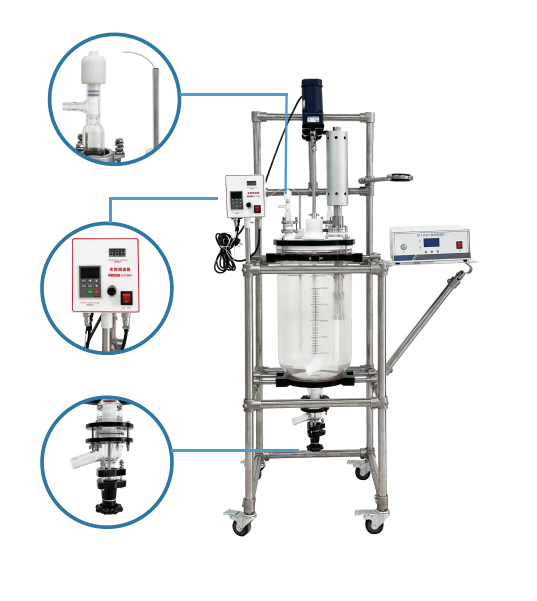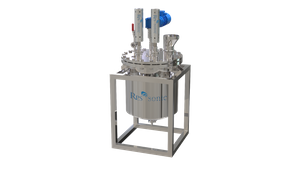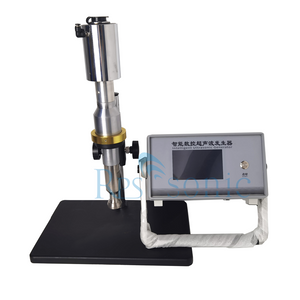Ultrasonic Emulsification Technology
Ultrasonic emulsification is a highly efficient technology that uses high-intensity, high-frequency ultrasonic energy to uniformly and stably mix two or more immiscible liquids (such as oil and water) to form an emulsion. Its core principle is the utilization of the ultrasonic cavitation effect.
I. Basic Principle: Ultrasonic Cavitation Effect
This is the key physical process that enables ultrasonic emulsification. The principle is as follows:
[High-intensity ultrasonic waves] -[Generate alternating high/low pressure sound waves]
--> [Microbubbles (cavitation bubbles) form in the liquid]
--> [Microbubbles grow rapidly]
--> [Microbubbles violently collapse during the high-pressure phase]
--> [Extreme local conditions (high temperature, high pressure, shock waves) are generated]
--> [These intense shear forces break liquid droplets into micron/nanometer-sized droplets]
The intense shear forces, shock waves, and microjets generated by these extreme conditions act at the interface between the two liquids, tearing and breaking droplets in one phase (e.g., the oil phase) into extremely small droplets (down to the micron or even nanometer scale). These droplets are then evenly dispersed into the other phase (e.g., the water phase), forming a stable emulsion.
II. Technical Advantages
Compared to traditional emulsification methods (such as high-speed shearing, homogenizers, and colloid mills), ultrasonic emulsification offers significant advantages:
High emulsion quality: The resulting droplets are smaller and more evenly distributed (narrow particle size distribution), resulting in improved emulsion stability.
High efficiency and low energy consumption: The emulsification process is extremely rapid, typically completing within seconds to minutes, concentrating energy utilization and achieving higher efficiency than prolonged mechanical stirring.
High controllability: By adjusting the ultrasonic power, amplitude, exposure time, and temperature, the particle size and properties of the final emulsion can be precisely controlled.
No or minimal emulsifier is required: Because the droplets are broken into very small pieces, they are inherently more stable, reducing the amount of emulsifier required.
Simple process and easy cleaning: The equipment typically has only one probe (horn) that penetrates the liquid, resulting in a small contact area, easy cleaning and sterilization, and suitable for aseptic operation.
Wide applicability: It can process high-viscosity liquids and shear-sensitive materials.
III. Main System Components
A laboratory or industrial-grade ultrasonic emulsification system typically includes the following:
Ultrasonic generator: A power source that converts mains electricity into high-frequency electrical energy.
Transducer: A core component, typically made of piezoelectric ceramic (such as lead zirconate titanate (PZT)), that converts high-frequency electrical energy into mechanical vibrations of the same frequency.
Amplifier: Commonly known as the "probe," attached to the transducer, amplifies the transducer's vibration amplitude and transfers its energy to the liquid. The probe tip is directly immersed in the liquid being treated.
IV. Main Applications
Ultrasonic emulsification technology has a wide range of applications, covering nearly all industries requiring emulsion preparation:
Food Industry:
Making mayonnaise, salad dressings, and sauces.
Making flavor emulsions for juices and beverages.
Making cream and ice cream.
Preparing nanoemulsions for encapsulating functional ingredients (such as vitamins and essential oils).
Cosmetics and Personal Care Products:
Production of creams, lotions, sunscreens, serums, shampoos, shower gels, etc. Ultrasound can create a delicate skin feel and a stable texture.
Pharmaceutical Industry:
Preparation of intravenous fat emulsions.
Manufacturing ointments and creams.
Development of drug delivery systems (e.g., liposomes, nanoemulsions).
Petrochemical Industry:
Emulsification of heavy oil with water to reduce combustion viscosity and pollution.
Production of emulsified diesel and emulsified fuel.
Biodiesel Production:
Enhancing transesterification reactions to improve reaction efficiency and yield.
Nanomaterial Synthesis:
Used for the preparation of nanoparticles and nanocomposites.
V. Limitations and Challenges
Probe Wear: The horn probe tip may corrode or "cavitate" under intense cavitation, requiring regular replacement, especially when handling corrosive materials.
Thermal Effects: Most of the ultrasonic energy is converted into heat, which can denature temperature-sensitive materials. Therefore, a cooling system (such as a water bath or jacketed reactor) is often required.
Processing Capacity Limitations: For large-scale industrial production, high-power equipment or continuous flow reactors (such as ultrasonic flow cells) are required to increase processing capacity.
Noise: Ultrasonic waves generate high-frequency noise during operation, requiring sound insulation measures.
Summary
Ultrasonic emulsification technology is an efficient, reliable, and widely used advanced manufacturing process. Leveraging its unique cavitation effect, it enables robust and uniform material processing at the microscale, offering significant advantages in improving product quality, production efficiency, and developing new products. With continuous advancements in equipment technology, its application in the industrial sector is becoming increasingly widespread and important.

 English
English













